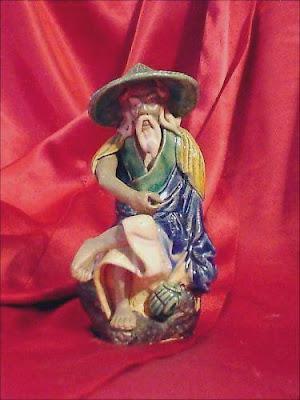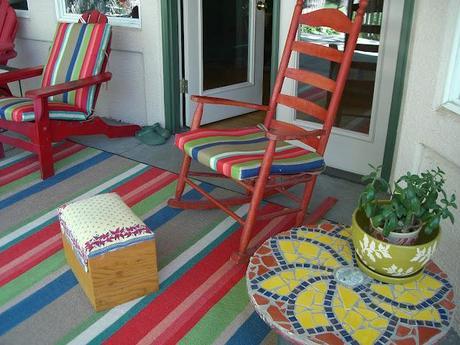
That old jade plant to the right of the rocker atop the mosaic table top I made three years ago was brought outdoors, cleaned, watered and examined. Too leggy, not enough light. Perhaps a summer on the patio will help that situation.
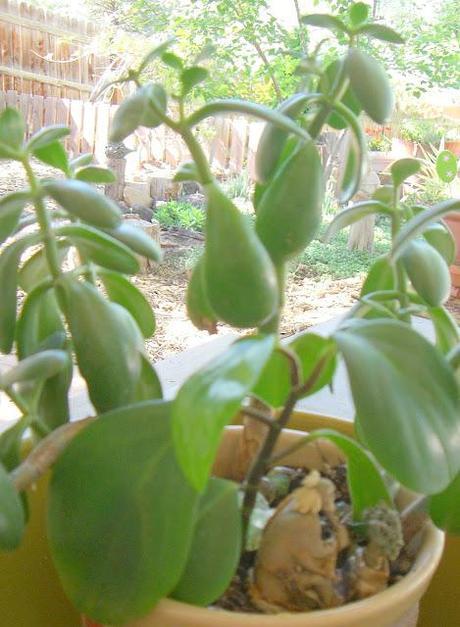
On closer examination, the mud man sitting on the soil (above right in picture) was also taken out and scrutinized more closely. I cleaned it, looked at his hands, his back, the shrub in front of him, and wondered what the mud man was trying to tell me.
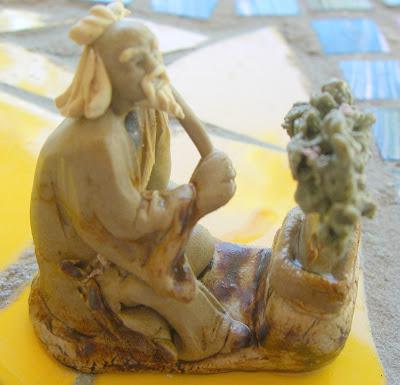
The mud man was whipping his back in self flagellation. What was behind the "mud man" and how did he come about?
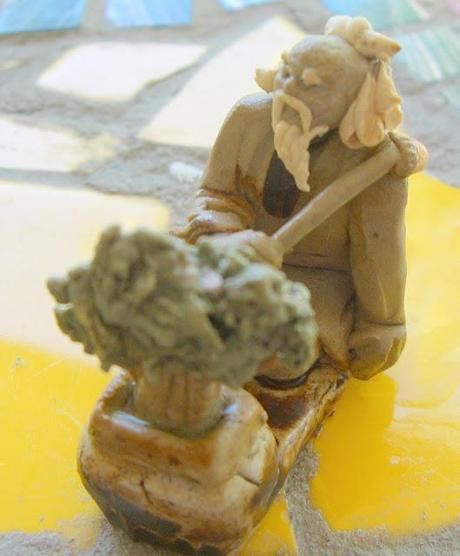
This is what I found Edensong:
The figurines are commonly known as mud figures or figurines, mud people, mud men, mudd men, or mudmen.
Over 1000 years ago, Chinese artisans during the Tang Dynasty (618-907 AD), were creating landscape bonsai, miniature landscapes in a tray, a practice known as Pen'Jing. To capture the realism of a favorite countryside or mountain scenic view, the artists added rocks and planted small trees in a large ceramic tray to simulate the panorama on a smaller scale. These were intended to invoke a harmonious feeling to the viewers. In an effort to capture the illusion, the Chinese artisans used figurines of people, animals, huts and temples, which gave an appearance of great age and size to the miniature forests.
Figurines have had a place in bonsai as a visual contribution. Pen'Jing, nearly a lost art form, is experiencing a revival in modern day China and is once again popular with Chinese bonsai enthusiasts. The prosperous Manchurian Ch'ing Dynasty (1644-1912) began declining at the end of the 18th century. The successful export market for fine china was impaired by excessive competition for the wares. Pottery and figurines dominated the Chinese export trade well into the next century. Mud figures thrived, as they were different from ordinary figurines. They were made individually by hand and involved nearly all members of the village.
Mudmen were brightly glazed figurines of men, women, wise men and old sages, seated or standing, holding flutes, scrolls, pots, fish and other objects of mystical importance or sometimes fishing. After completion of the rice harvest and the dry season set in, villagers turned to figurine production to stimulate the economy. For smaller ones, the artist just picked a small piece of mud and in no time made a figurine out of it by using their two fingers.
source
My little mud man was purchased several years ago at a local nursery and cost around $10-$15. I'll be on the lookout for more because they intrigue me. Ebay has quite a few authentic ones (and reproductions) if you are interested in purchasing a mud man. You can tell yourself a story of what the mud man is saying to you.
Go Shopping for Mud Man Figurines
